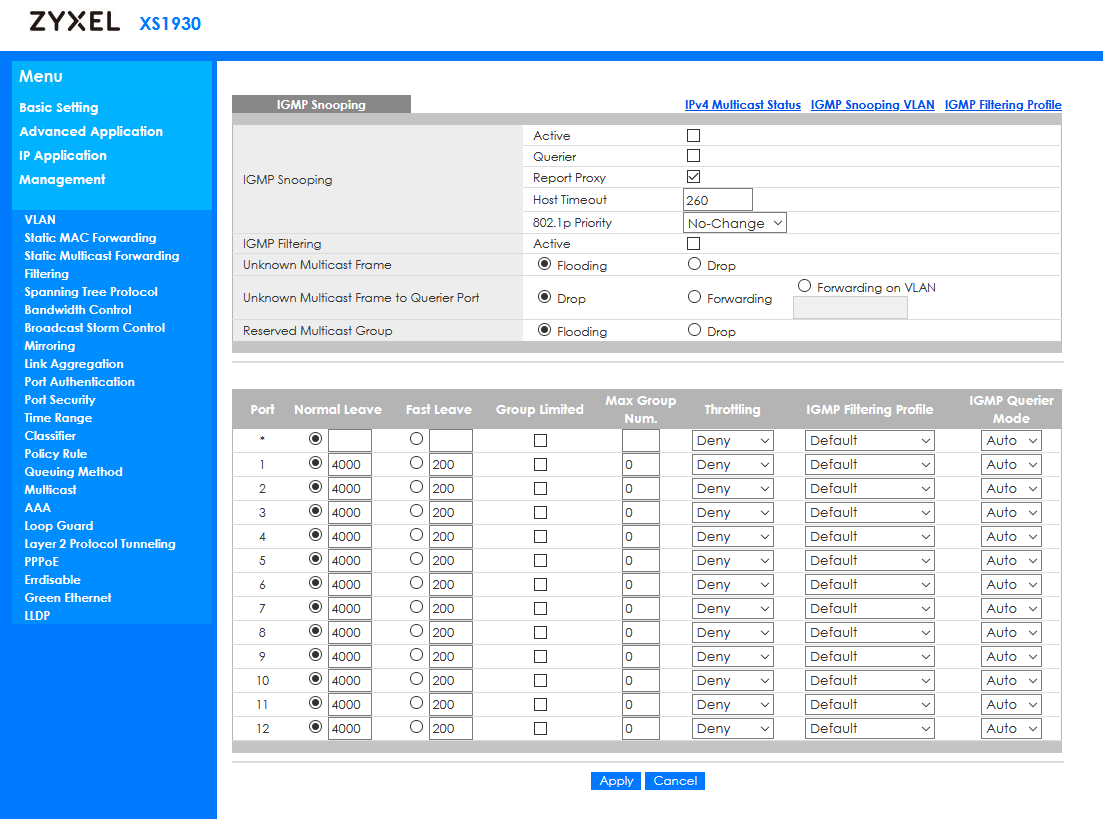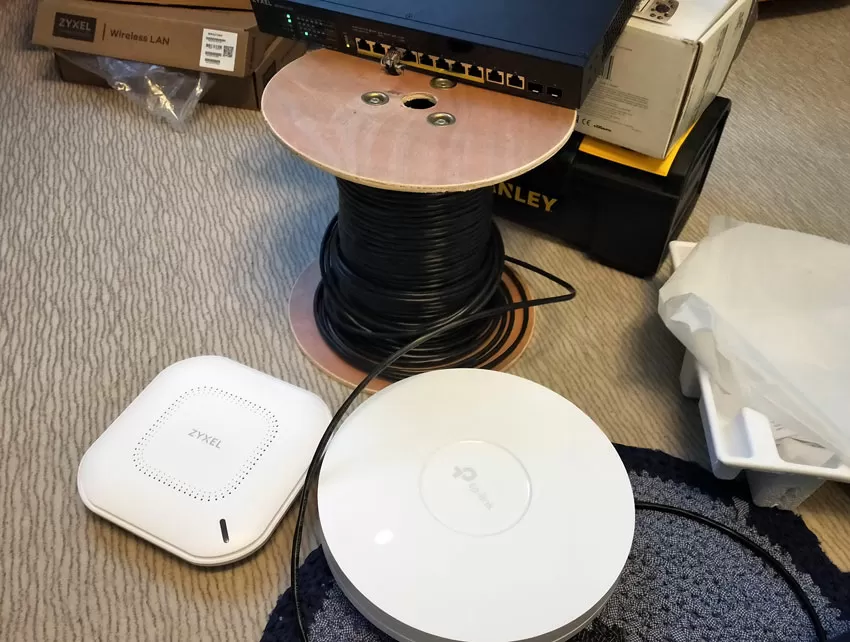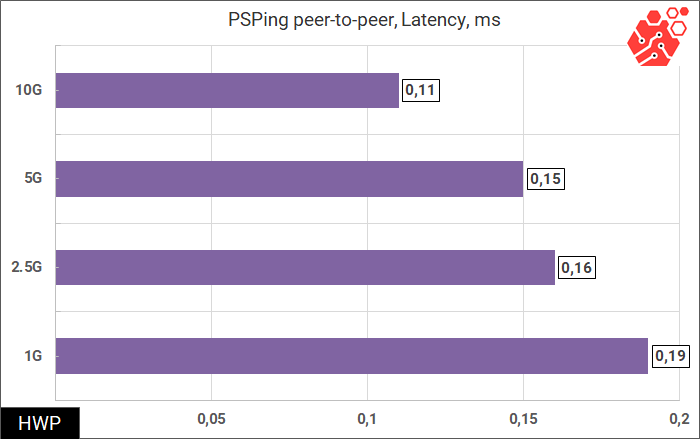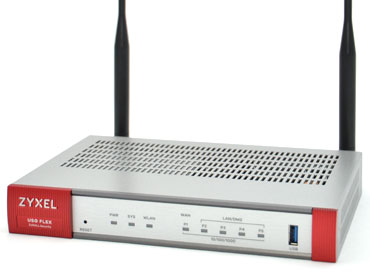Zyxel XS1930-12HP review: Multi-Gigabit PoE switch as the core of a Wi-Fi 6 network
The adoption of the Wi-Fi 6 standard raises the requirements for the cable infrastructure of the LAN: most mid-level access points already use 2.5-Gigabit and 5-Gigabit connections, and the top ones are equipped with 10-Gigabit optical ports. In addition to higher bandwidth, a fast network has low latency, which allows you to actively use Wi-Fi 6 for online games, in the field of robotics and IoT.

Of course, sooner or later, but the world will come to the use of 10-Gigabit networks, and most likely to the mass introduction of optics, but now the intermediate standards 2.5 GBase-T and 5GBase-T have an undeniable advantage: they use an existing cable network, usually laid with a shielded CAT-5E twisted pair. This means that when upgrading equipment, you do not need to re-stretch the cables, which somewhere may simply be hidden under the wallpaper somewhere.
Naturally, with the growth of Wi-Fi speed, the load on the LAN will also increase, so now it makes sense to choose universal models of network equipment that support all Ethernet standards: from 100 Megabits to 10 Gigabits over a twisted pair, and plus they have an increased PoE budget for powering the "hottest" network devices. Zyxel today has a full range of equipment for Wi-Fi 6, we have already tested the NWA210ax and NWA110ax access points, and today we will talk about the device that is the core of the Wi-Fi 6 network, the Zyxel XS1930-12HP multi-gigabit switch.
Zyxel XS1930-12HP key features:
- 10 ports RJ45 supporting speed:
- 100 Mbps
- 1 Gbps
- 2.5 Gbps
- 5 Gbps
- 10 Gbps
- From which 8 ports supporting PoE ++ (IEEE 802.3af/at/bt)
- With common 375 Wt budget
- PoE limit up to 60 Wt per port
- 2 slots SFP+ supporting 1G/10G
The total switching matrix is 240 Gbit / s, that is, by the number of ports multiplied by two, and the total memory is 256 MB RAM + 32 MB ROM. Our tests show that a typical 802.11 ax access point consumes from 7 Watts in idle mode for the lowest-end models to 17 Watts on top-end versions with 3 radio modules. At maximum load, this value increases slightly, so the power reserve here is huge, and even the power supply is designed for an impressive 500 Watts.
In general, from the point of view of the design of the power supply circuit, the XS1930-12HP looks like the most modern switch of all tested by Zyxel: there is not a single electrolytic capacitor on the board, only one solid-state bank is on the power filter. In general, power filtering is applied here at every stage: starting from the input 220V plug and ending with the output to the network ports. For cooling, two fans are used, working in the N+1 scheme, and the Japanese components Rubycon and Nippon are used in the power supply. In general, the margin of safety, judging by the element base, is huge here, and if you take the device with an eye for years, here you are #1 candidate.
Since each port can work in one of 5 modes, the display here is placed in the left part of the front panel, and I do not like it: for each port there is a separate LED for connection speed and a separate one for power, so even when connecting 4-5 devices, the display looks small and ripples in the eyes.
PoE and port configurations
The Zyxel XS1930-12HP is a Level 3 switch with a large, branched settings menu. Here, for some reason, there is no such convenient informative settings screen as in the recently reviewed GS2220-10HP, but otherwise the two switches are similar in web interface. In the hardware monitoring section, data is available from three temperature sensors, two fan tachometers, and +3.3 V and +12 V bus voltages.
For each of the ports with the PoE function, information about the current and maximum power consumption is available, plus you can configure PoE timer limits or a strict power consumption limit per port, set in milliwatts. The latter can be very useful for preserving the network operation in the event of a breakdown on the final equipment, when, for example,the access point begins to consume an unusually large amount, or there is a short circuit or a leak.
Even during testing, I came across an unusual SFP+ port setting: in the switch settings, it is hard-coded whether a transceiver or a DAC cable is connected to this slot. And what is interesting, if SFP+ (normal optics) is set, then the link through the DAC switch will not see. And for compatibility with different hardware, each port can be manually limited in speed. I talked to the technical engineer of Zyxel, and learned interesting information that when connecting 2.5-Gigabit access points to 10-Gigabit network cards that support nBase-T, you may not have the maximum speed, so in some cases, the network card must be forcibly limited to 2.5 GBase-T or 5GBase-T, and if it is difficult to do this with software, a switch will help.
Multicast configurations
All modern access points already support Multicast traffic, which allows you to broadcast both office staff traffic and multicast traffic for digital panels and Digital Signage devices in one environment. But, of course, in multicast settings, the switch is head and shoulders above the access points: here you can create filtering profiles and configure multicast routing.

You can configure IGMP Snooping for different virtual networks and even wrap unknown Multicast frames in a separate VLAN.
VLAN configurations
You will probably need the ability to create a separate virtual network for voice traffic, so that you can then set priorities for it separately or route it at the point of exchange of local traffic, before going to the cable. For security needs, you can use VLAN binding and Vendor ID, and if your company has a requirement to allocate a separate VLAN for each client, then Zyxel XS1930-12HP will please you with support for up to 4096 VLAN IDs, that is, enough even for a solid symposium or conference.
Testing the stability of the connection
The highlight of the 2.5 GBase-T standard is that it does not need any special cable network: you can increase the LAN speed by 2.5 times on the same category 5E cables laid earlier, while maintaining the same communication range, changing only the terminal equipment: access points and network cards. However, every sysadmin knows that the cable is different from the cable, and if "gigabit will forgive everything", then already at the speed of 2.5 GBase-T, a low-quality twisted pair will not work normally. Let's test this statement by taking the two access points recently reviewed in our reviews: Zyxel NWA210ax и TP-Link EAP660 HD.

After testing the Zyxel GS1350-18HP long-range PoE switch, I was left with 10 meters of cheap SFTP cable made of copper-plated aluminum. For him, the distance in the region of 100 meters is the maximum at which even 100-megabit equipment works, so it is cheap and low-quality. Let's see what to do if you saved money and laid such a terrible cable when installing Wi-Fi of the last generation. Both access points were connected via PoE.
| Copper-plated cable (PoE) testing) | ||
|
Distance |
Zyxel NWA210ax |
TP-Link EAP660 HD |
|
100 meters |
Not turning on |
Not turning on |
|
80 meters |
The LED lights up, does not turn on |
The LED lights up, does not turn on |
|
50 meters |
Works, 100 Mbit/s connection |
Works, 100 Mbit/s connection |
|
40 meters |
Works, 100 Mbit/s connection |
Works, 100 Mbit/s connection |
|
30 meters |
Works, 2.5 Gbit/s connection |
Works, 2.5 Gbit/s connection |
So, our test shows that a cheap cable does not have the boundary length at which 1 Gigabit/s already works, and 2.5 Gigabits-not yet, at least if you measure the distance in increments of 10 meters. Depending on the layout of the room, 30 linear meters of cable can connect devices that are located from each other just through the wall, or on the ceiling in the next room, if you are lucky. Therefore, here you need to understand that the promised savings on cable infrastructure you will have only if a good cable was laid before you, and you will not be able to save twice here. And to confirm this statement, let's take a high-quality category 5E cable with copper cores.
Unfortunately, after the cable was in my hands, it turned out that our partners mistakenly sent an unshielded twisted pair, UTP CAT5E 4x2x0. 52, although I asked in large letters for a fully shielded cable, as required by the 2.5 GBase-T standard. But there's nothing to do: what came, came, and in order to compensate for the shortage a little bit, I bought shielded chips.
| Testing on copper unshielded cable (PoE) | ||
|
Distance |
Zyxel NWA210ax |
TP-Link EAP660 HD |
|
100 meters |
Works, link 2.5 Gbit/s |
Works, link 2.5 Gbit/s |
No intrigue happened: after rewinding 100 meters on the reel, squeezing and connecting, I saw a bright blue LED on the access points, signaling that the connection is established at a speed of 2.5 Gbit/s.
Our test shows that it is not necessary to choose a dense shielded cable for a 2.5-Gigabit network. In the case of Zyxel equipment, you can do without the existing cable infrastructure, if it is implemented with copper-core cables.
Testing the delay
One of the significant advantages of Wi-Fi 6, and indeed NBase-T networks in general, is a lower latency compared to the 1-Gigabit standard. To test the latency parameter via the switch, we used the Intel X550-T2 network cards (connection 1 and 10 Gbit/s) and Aquantia AQC107 (connection 2.5 and 5 Gbit/s), as well as the PsTools package from Microsoft.

I want to pay attention that I had difficulties with starting the switch with 10-gigabit Intel X550-T2 network cards at speeds of 2.5 and 5 Gbit/s the connection was not established, although when connecting the cards directly with a cable, the link worked and the traffic passed without problems. I informed the Zyxel specialists about the found problem, and added this problem to the piggy bank of glitches of Intel network cards, which (glitches, and cards, too) have accumulated a lot over the past year.
Cloud management
In wireless networks legacy 802.11 b still allows management through a Web interface or via the command line, but today the density of access points on the object increases, and the desire of the sysadmin or integrator to configure and delve into the documentation accordingly reduced. Over the past couple of years, integrators have already tried out what centralized management of a single-brand infrastructure is: from the moment of design to maintenance after implementation. At Zyxel, this direction is developed under the Nebula brand and is a cloud service in which you can upload all your organizations with all their offices, and in a single window monitor the main parameters, update / restart, configure SD-WAN and VPN between branches, without touching the Web interface or CLI of end devices.
I was somewhat lucky that during the testing period, Zyxel released a new firmware for the switch, and I can show you how the firmware is updated from the general Nebula interface, which includes a switch and an access point. To update, you just need to select the devices that currently have an update in the list and click the "update" button. After a short wait, the system is updated: no need to download anything.bin files to your computer, no need to open inbound ports on the object - it is not necessary to watch the version of the platform, choosing the firmware under it, do not take the responsibility for security and reliability updates here meets Zyxel! One of the clear advantages of centralized monitoring is the advanced statistics on device load (traffic and power by port), which helps in identifying bottlenecks, testing, and planning updates to the existing network.
Recommendations for ordering
When designing a new-generation wireless network according to the 802.11 ax standard, note that wired network equipment has also not stood still all these years. Where today there is a replacement of 802.11 ac with Wi-Fi 6, tomorrow the IoT generation will actively come into its own, as well as interactive devices that require low network latency. We are gradually moving away from the 1-Gigabit standard in favor of faster technologies and from 6-Watt access points to 16-Watt ones. Practice shows that those who did not save on cable in the past 10 years can now perform a simple upgrade of the grid by simply replacing the switch and access points: there is no need to drill and drag anything. And now you can do the same with the switch, choosing the most versatile device in advance, which will not need to be changed in the future. Zyxel XS1930-12HP - this is exactly such an option: there is a huge reserve in power and speed, plus a high-quality element base that will allow the device to live up to the times when 10G will become obsolete. That's when it's time to change it.
And in a separate line, I recommend to abandon the use of Intel network cards for copper connections above 1GBase-T, as well as Intel wireless adapters on the AX200 core. Our tests show that these boards are unstable.
Michael Degtjarev (aka LIKE OFF)
04/02.2021













